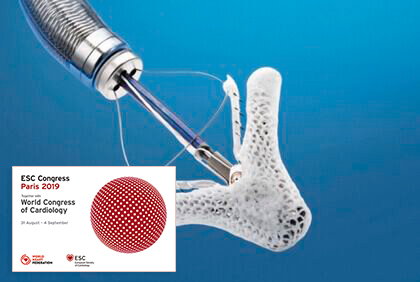Negative one-year outcomes of Mitra-FR led to several discussions and hypothesis, especially after the COAPT was published only a few weeks later. According to the COAPT study, the MitraClip was able to reduce hospitalization rate for cardiac failure and also all-cause mortality, compared against optimal medical treatment alone. When comparing the COAPT to the Mitra-FR, contrasting outcomes were explained by the shorter follow-up of the latter, and therefore better outcomes were expected from a longer follow-up period.

Unfortunately, Mitra-FR 2-year outcomes, presented on Monday, have confirmed those first results. The composite of all cause death and unplanned hospitalization for cardiac failure was similar between the groups (64.2% for the MitraClip vs 68.6% for the group receiving optimal medical treatment alone).
All-cause mortality was 34.9% for the MitraClip and 34.2% for the control group (HR 1.02; CI 95% 0.70 to 1.50), and unplanned hospitalization rate for cardiac failure was 55.9% for MitraClip and 61.8% for the control group (HR 0.97; CI 95% 0.72 to 1.30). There was a trend in favor of the intervention group that did not reach statistical significance.
Read also: ESC 2019 | DAPA-HF: Dapagliflozin Shows Benefit for All Subgroups.
These results confirm the initial results of Mitra-FR and perhaps we should think the difference with the COAPT outcomes lies on population characteristics rather than follow-up period.
It seems obvious that we need further research on percutaneous repair of secondary mitral regurgitation to be able to better identify what patients will really benefit.
Original title: 2-year follow-up of the MITRA-FR study: effectiveness of percutaneous mitral valve repair in secondary mitral regurgitation.
Reference: Presentado por Jean-François Obadia en el ESC 2019. Paris, Francia.
Subscribe to our weekly newsletter
Get the latest scientific articles on interventional cardiology
We are interested in your opinion. Please, leave your comments, thoughts, questions, etc., below. They will be most welcome.





